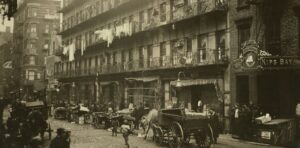Why brokerages should establish habits in discussions with clients

A B.C. court has ruled in favour of an insurance brokerage in a dispute over whether or not its broker recommended bumping up a claimant’s Uninsured Motorist Protection (UMP) from $1 million to $2 million before the claimant was catastrophically injured in a serious car accident near Squamish, B.C.
Neither the broker nor the claimant could recall the discussion at the point of sale.
The court ultimately sided with the brokerage for three reasons:
it was a procedural habit for its brokers to discuss Excess UMP with clients
the insurance contract included the claimant’s signature that he declined Excess UMP
the claimant’s purchase history indicated he had declined Excess UMP coverage in 16 previous sales transactions.
“[Westland broker Ashley] Ouellette effectively testified that she did offer and explain Excess UMP to [claimant Mark] Carriere de Davide,” B.C.’s Supreme Court Justice Justice Jan Brongers ruled in a decision released last Wednesday.
“She said that she knew this to be the case since she had a routine standard practice that she followed when serving Westland’s Autoplan customers. It was guided by Westland’s computer system that Ms. Ouellette used to input client information while effecting transactions.”
The background
On July 9, 2016, Whistler, B.C. resident Carriere de Davide was riding as a passenger in a Pontiac Grand Am owned and driven by his then girlfriend. They were travelling southbound on the Sea to Sky highway that connects Whistler with Vancouver.
When the Pontiac was approximately 30 km south of Squamish, it rounded a curve in a 60 km/h speed zone. The driver oversteered, causing the Pontiac to spin into the northbound lane where it struck another vehicle, a Volkswagen Golf. The point of impact was on Carriere de Davide’s passenger side of the Pontiac and the front of the Volkswagen.
Carriere de Davide was rendered unconscious by the force of the collision, and was ultimately airlifted from a Squamish hospital to Vancouver General Hospital. He was diagnosed with a severe traumatic brain injury, as well as various bone fractures in his neck, shoulder, spine, chest, and pelvis. He also sprained his ankle, and lacerated his kidney, liver, spleen, bowel, and colon.
In Other News: Public auto in Alberta? Reports cost out the potential impact
He was ultimately hospitalized for five months, only returning to his Whistler home in December 2016. He has received extensive treatment for his injuries, including physiotherapy, occupational therapy, visual therapy, speech therapy, kinesiology and counselling.
Following the accident, Carriere de Davide made a claim for compensation to ICBC. Its most significant component was based on his UMP coverage, since the at-fault motorist, the driver of the Pontiac, had only basic third-party liability coverage of $200,000.
Carriere de Davide’s claim was ultimately settled with ICBC in July 2020. He received a total payment of $665,356.
The lawsuit
Carriere de Davide sued Westland. He argued to the court that if he had understood he could get an extra $1 million worth of UMP by paying an additional premium amount of just $25, he would have bought it. Since he did not buy it, he presumed the broker must not have offered or explained it to him.
Carriere de Davide sought a damage award of $1 million from Westland, reflecting the amount of additional compensation he says he would have received from ICBC had he purchased Excess UMP.
But the court shot that argument down, in spite of Westland’s broker not having a proper record of the transaction. Ultimately, the court pointed to established caselaw that says habits can count for evidence when neither party can recall what happened.
Oullette, the court found, most likely told Carriere de Davide about the option because the broker’s established processes included a computer prompting the broker to ask about the coverage.
“Once the system specifically prompted [the broker] to discuss Excess UMP, she would show the client their driver’s licence (which she would have asked the client to physically hand to her at the start of the transaction) and advise them that with their licence they were automatically covered for $1 million in the event they were hit walking, driving, or biking, and the person who hit them was uninsured or underinsured,” the judge wrote.
“She would then ask the client if they wanted to increase this coverage to $2 million, for $25 a year. If the client had questions about that, she would answer them. Once the client had chosen whether to accept or decline Excess UMP, she would key into the computer system either ‘Y’ (yes) or ‘N’ (no), as appropriate.”
In this case, the insurance contract Carriere de Davide signed had an ‘N’ notation next to the section about Excess UMP. And the broker’s note in the computer read: “No Excess UMP purchased on this Transaction.”
The court also noted Carriere de Davide had never purchased Excess UMP before — including 16 auto insurance transactions — leading up to the 2016 collision. He had started buying insurance from Westland’s Whistler office as early as 2006.
Feature image courtesy of iStock.com/StandbildCA



